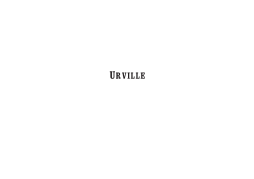
Additional Information
Book Details
Abstract
Urville, the capital of a large island province, has a population of nearly 12 million, making it the one of the most significant cities in Europe. It is also entirely imaginary.
Gilles Tréhin, an autistic man with exceptional creative talents and an obsession with large cities, conceived and developed Urville over the course of 20 years. He shares his vision in this beautifully illustrated guide to the city, which he renders convincingly real in nearly 300 drawings of different districts of Urville. He describes, in remarkable detail, the architectural styles of its individual buildings and provides historical, geographical, economic and cultural information. This includes historical figures and cultural anecdotes grounded in historical reality - Tréhin accounts for the effects of the Vichy regime, the Second World War and globalisation on his imagined city.
This book offers fascinating evidence of and insight into the creative power of the autistic mind and will be of interest to people with autism and without.
This book offers an insight into the creative power of the autistic mind which will appeal to autistic and non autistic people alike.
Autism Us
A collection of almost 200 pencil drawings of an imaginary city. Of interest to anyone with a taste for fantasy, and an insight into the incredible imaginative creativity of some autistic minds.
Current Awareness Service
Urville is an impressive work not because Trehin has been called autistic but because it is a testament to the creativity and talent he possesses. The artistry and finesse evident in the pages of Urville gives us an accomplished vision of one man's ideal city. For the drawings of this city alone, it is worth spending some hours in Urville. Taking the city in its intended context fires the imagination and gives the interested reader an imaginary tour unlike any other.
The Irish Psychologist
Gilles Tréhin is 32 years old and autistic. He has exceptional talents in mathematics, music, languages and art. He has been developing his vision of Urville since the age of 15, and drawing since the age of 5. His father is vice-president of Autism-Europe, Belgium.
It is with great pleasure that one can see `Urville' on the bookshops shelves. Gilles Trehin, a young man with autism is a drawing artist. His sketches represent primarily perspectives of buildings belonging to an imaginary urban development which his author called 'Urville' and which he started in 1984. This city has avenues, streets, public service buildings, churches, schools etc. All drawn very carefully, the small details are deliciously drawn.
Link, Autism - Europe
Table of Contents
| Section Title | Page | Action | Price |
|---|---|---|---|
| Prelims (Foreword - Antonio Guterres, Acknowledgements) | |||
| Introduction | |||
| Part One: Land, conflict and humanitarian action: Exploring the nexus | |||
| 1. Why humanitarian organizations need to tackle land issues | |||
| Alex de Waal | |||
| 2. Tackling land tenure in the emergency to development transition in post-conflict states: From restitution to reform | |||
| Liz Alden Wily | |||
| Part Two: Humanitarian intervention in land issues: Lessons and challenges | |||
| 3. Humanitarian approaches to conflict and post-conflict legal pluralism in land tenure | |||
| Jon D. Unruh | |||
| 4. Land in return, reintegration and recovery processes: Some lessons from the Great Lakes region of Africa | |||
| Chris Huggins | |||
| 5. Leader of the pack: Who will take the lead on post-conflict HLP issues? | |||
| Scott Leckie | |||
| Part Three: Case studies | |||
| 6. International standards, improvisation and the role of international humanitarian organizations in the return of land in post- conflict Rwanda | |||
| John W. Bruce | |||
| 7. Land rights in Angola: Poverty and plenty | |||
| Conor Foley | |||
| 8. Going home: Land, return and reintegration in Southern Sudan and the Three Areas | |||
| Sara Pantuliano | |||
| 9. Between war and peace: Land and humanitarian action in Colombia | |||
| Samir Elhawary | |||
| Part Four: Conclusions | |||
| 10. Charting the way: Integrating land issues in humanitarian action | |||
| Sara Pantuliano | |||
| Back Matter (Index) |
